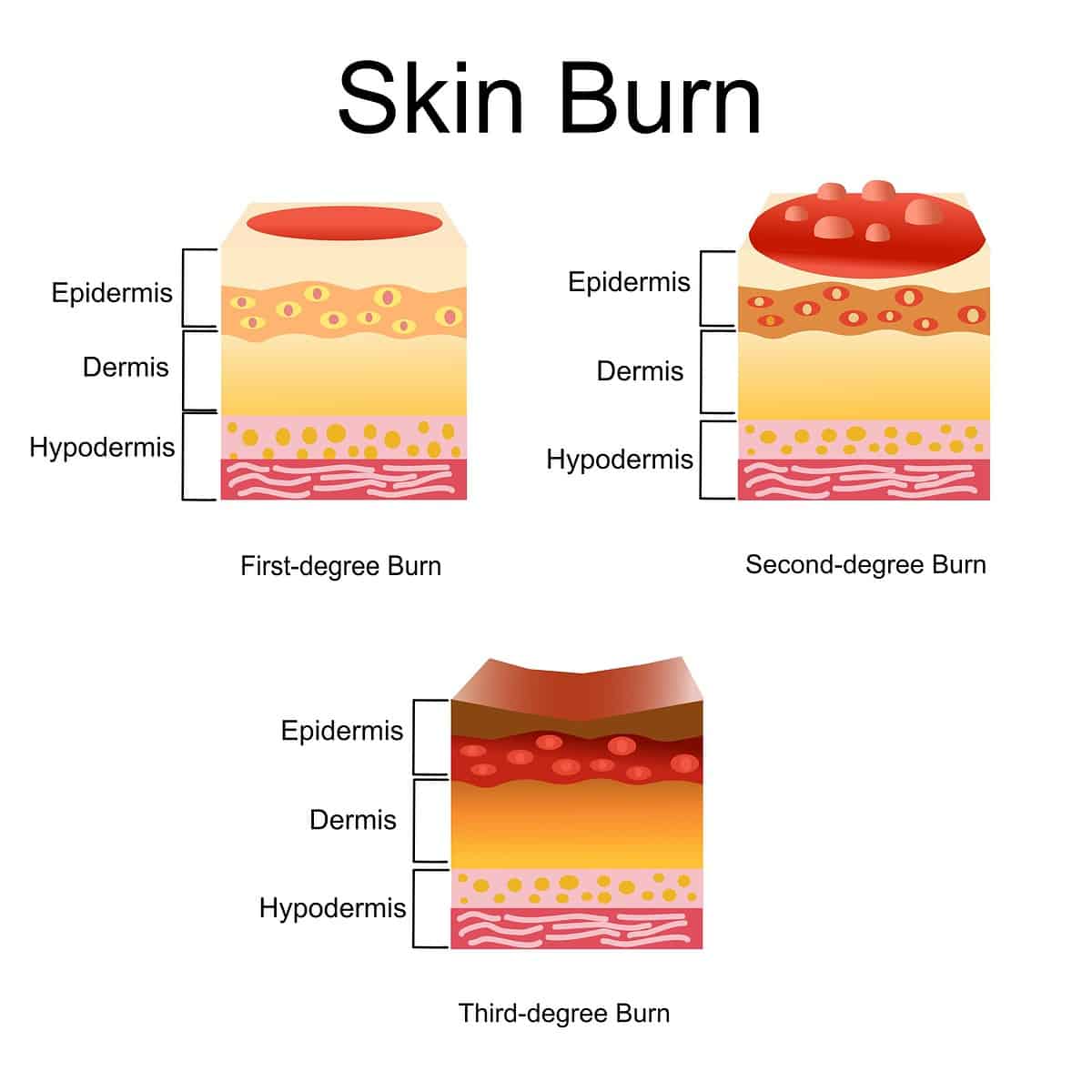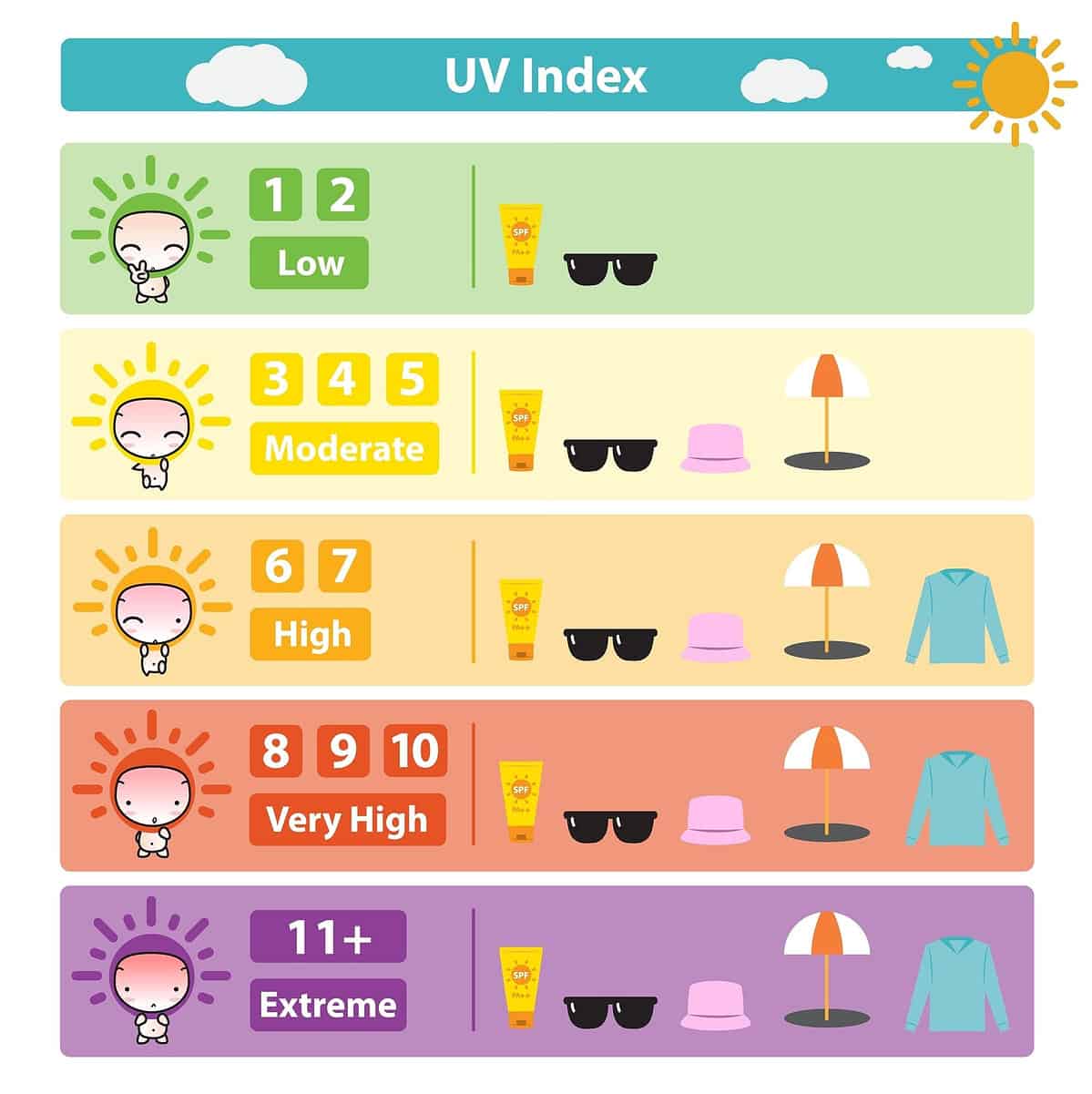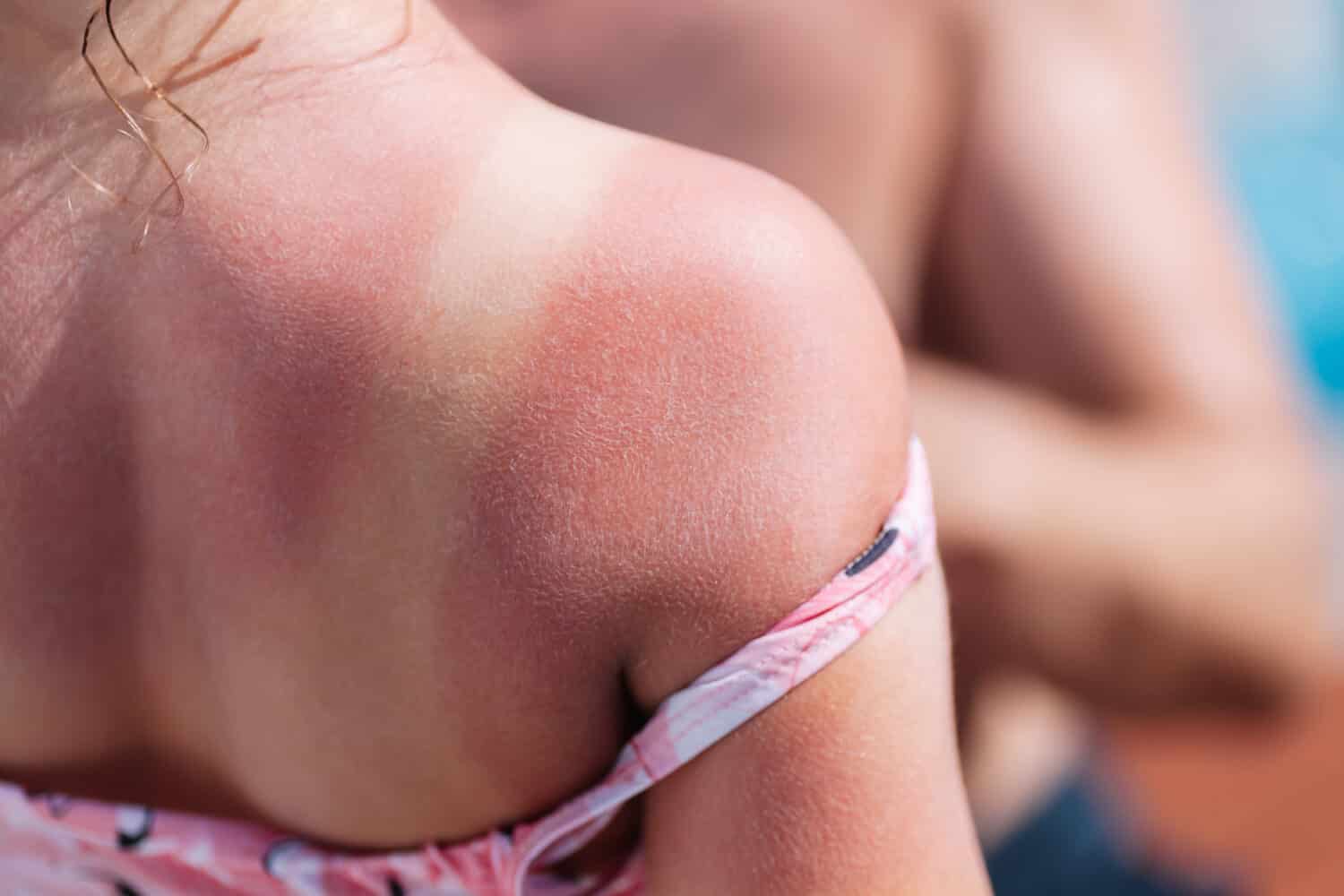Free Sunburn Severity Chart: Check Your Health
As summer comes around, getting outside is fun for everyone! Pools start to open up, providing an excellent chance to get in the water. Outside sports take center stage for kids and adults. It's important to remember with the added outside time, the risk of developing sunburn is higher. You will want to take extra care to prevent sunburn in yourself and your children. Check your health and sunburn severity with this free chart and the information below!

Three different degrees of skin burn can happen from Ultraviolet rays from the sun.
©Mathinee srichomthong/Shutterstock.com
What is a Sunburn?
What exactly is a sunburn? The sun has UV rays or ultraviolet rays. Prolonged exposure to these UV lights can cause sunburn, a radiation burn to your skin. Certain skin types are at higher risk of developing sunburn. However, anyone can develop a sunburn. Sunburns can also put you at higher risk for skin cancers. This is one reason why taking measures to protect your skin against burns is essential. Getting outside and playing during the summer is fun, especially for children. Taking the extra time to load up on sunscreen, wear protective clothing, and be watchful can help you stay ahead of a sunburn that will zap the fun out of the summer day.
There are different types of sunburn severity. The first two, first-degree and second-degree burns, can typically be treated at home. However, it's always a good idea to consult a doctor if you are concerned. Here are the different types of burns to keep your eyes out for.
First Degree Burns
First-degree burns are damage to the outside layer of your skin. As a result, the skin will have a red appearance that is easier to spot on light skin. The redness can vary from light pink to medium red. You may also experience a tight or tingly feeling in your skin. Over time the burn may be painful to your touch. Blistering, soreness, and swelling are also common symptoms of first-degree sunburns. After three or four days, your skin may start to peel.
First-degree sunburns can be treated at home with over-the-counter medicines such as ibuprofen and aloe vera gels or creams. Applying a cool compress can also provide relief.
Second Degree Burns
Second-degree sunburns are more complicated than first degree. They occur when damage to the dermis layer of the skin happens. A symptom of second-degree sunburn is deep redness, which is very apparent on light skin. In addition, the skin may appear shiny or wet looking and have white discoloration and blisters. Pain also occurs with second-degree sunburns.
Second-degree sunburns will take longer to heal than first-degree sunburns. They can be treated the same way at home as first-degree burns; however, if pain and swelling persist, contact your healthcare provider for more specific treatment, especially if the skin is badly blistered.
In addition to the sunburn symptoms, you could also experience symptoms that could indicate heat illness, such as dehydration or heat stroke. These symptoms include:
- shivering
- nausea
- exhaustion
- headaches
- muscle cramps
- confusion
- dizziness
- fever
Although most sunburns can be treated at home, it is important to seek medical attention if you have any symptoms of heat illness.
Third Degree Burns
Although not as common, third-degree sunburns can happen. If you develop a third-degree sunburn, you will have the above symptoms and skin that looks leathery, dull, white, and numb. If you suspect you have a third-degree burn or any of the above symptoms, contact your healthcare provider immediately for treatment.
What Causes Sunburn?
Sunburn is caused by prolonged exposure to the sun's ultraviolet rays without proper protection. Assessing the UV level daily is essential, especially during hot days. Most weather apps can tell you the UV index for the day. When you know the UV index, you can adequately prepare for your day ahead. Continually apply sunscreen and examine your skin and your child's skin. If you suspect a sunburn is starting to develop, moving away from the UV rays and applying sunblock is important. Applying a broad-spectrum sunscreen that protects your skin against UV and UVB rays is best. Also, applying every 90 minutes can help reduce your risk of sunburn.

The sun's UV index can be checked daily. Doing so will enable you to take precautions to prevent sunburn.
©Mosterpiece/Shutterstock.com
What are the Symptoms of Sunburn
The main symptom of sunburn is red skin. The redder your skin becomes, the more burned you are. The burn will be more apparent on lighter skin. However, darker skin can still be burned. Keep a watchful eye on your child's and your skin to assess the sunburn severity. You may also develop the following:
- headaches
- nausea
- tingly skin
- blisters
- peeling skin
- muscle cramps
- fatigue
- tenderness
- swelling
- hot skin
- pain
Be on the lookout for these symptoms. The more diligent you are, the easier it will be to spot a sunburn happening. Sunburns can happen before we know it. As soon as you see your skin or your child's skin becoming burnt, covering the area or moving inside can help prevent further sunburn.
How To Prevent Sunburn
When you know you will be in the sun for an extended time, apply a broad-spectrum sunscreen. It can be helpful to apply this daily to your skin and your child's, regardless of how hot it is.
Pay attention to your skin type and your child's skin. For example, knowing your susceptibility to sunburn can help you become prepared. If you know you are more susceptible to becoming burnt, take care to apply sunscreen and wear protective clothing. Also, wear sunglasses to prevent your eyes from developing damage. You can also wear long sleeves and wide-brimmed hats for protective clothing.
How to Treat Sunburn At Home
If you become sunburned, you can start treatment at home. One of the first things you can do is cover your skin. This will keep it from becoming more sunburned. For example, if you wear a swimsuit and notice your shoulders are burning, putting on a t-shirt can prevent further sunburn damage. Another way to treat sunburn at home is using gels and creams specifically for sunburns, like aloe vera. You can also take a cool shower to cool your skin down or an oatmeal bath to relieve pain. NSAID pain relievers can also be taken. There are more at-home remedies you can try in this list. It's important to consider your sunburn severity and whether or not you need the care of a medical professional.
Am I at Higher Risk?
You may be at a higher risk for sunburn. Those with lighter skin, lighter hair such as blonde or red hair, and freckles tend to be more susceptible to developing sunburn. In addition, if you are spending a lot of time in the water, or on the water fishing, or in a boat, you can become more sunburnt because the sun is attracted to water. Also, you may be more susceptible if you spend a lot of time outside or playing sports. Knowing your risk is very important and can help you stay diligent in preventing sunburn this summer.

Applying broad-spectrum sunscreen every 90 minutes can help prevent sunburn on your child's skin and your own.
©NadyaEugene/Shutterstock.com
Long-Term Effects of Sunburn
There are some long-term effects of sunburns. These include a higher risk for certain skin cancers. You can also develop premature skin aging. This shows up in early wrinkles, age spots, and sagging skin. Eye cataracts can also develop.
When to Contact Your Doctor
If you or your child becomes sunburned, you will want to contact your doctor if:
- You have several blisters that cover over 20 percent of your body.
- You are in a lot of pain.
- Puss is coming from your blisters.
- If your baby is less than a year old and is sunburned.
- Have signs of being dehydrated.
- Very high fever. Typically over 103 degrees.
- Chills and shivering.
- Your sunburn is not improving with at-home care.
One Final Note
Sunburns are entirely preventable. This doesn't mean accidents do not happen. You can take steps to protect your and your child's skin, even as soon as you notice a sunburn occurring. Remember to apply broad-spectrum sunscreen daily. If you know you will be outside for a long time, take the time to reapply the sunscreen every hour or ninety minutes, even if you do not believe it is needed. You can also wear protective sun gear like long sleeves, hats, and sunglasses. Treat sunburn symptoms with ibuprofen, gels, and creams, and call your doctor if you have any concerning symptoms of heat illness or painful blisters. Even though there are varying degrees of sunburn severity, you can take measures this summer to protect yourself and your children from sunburns so you can have the best summer possible!
The image featured at the top of this post is ©Lia_Russy/Shutterstock.com
